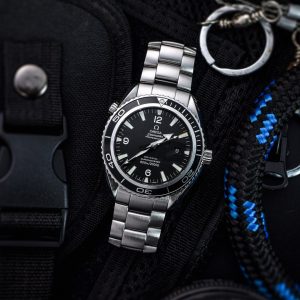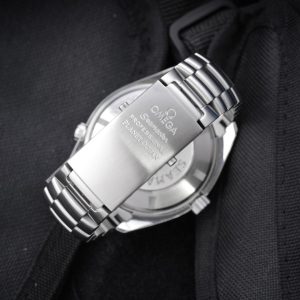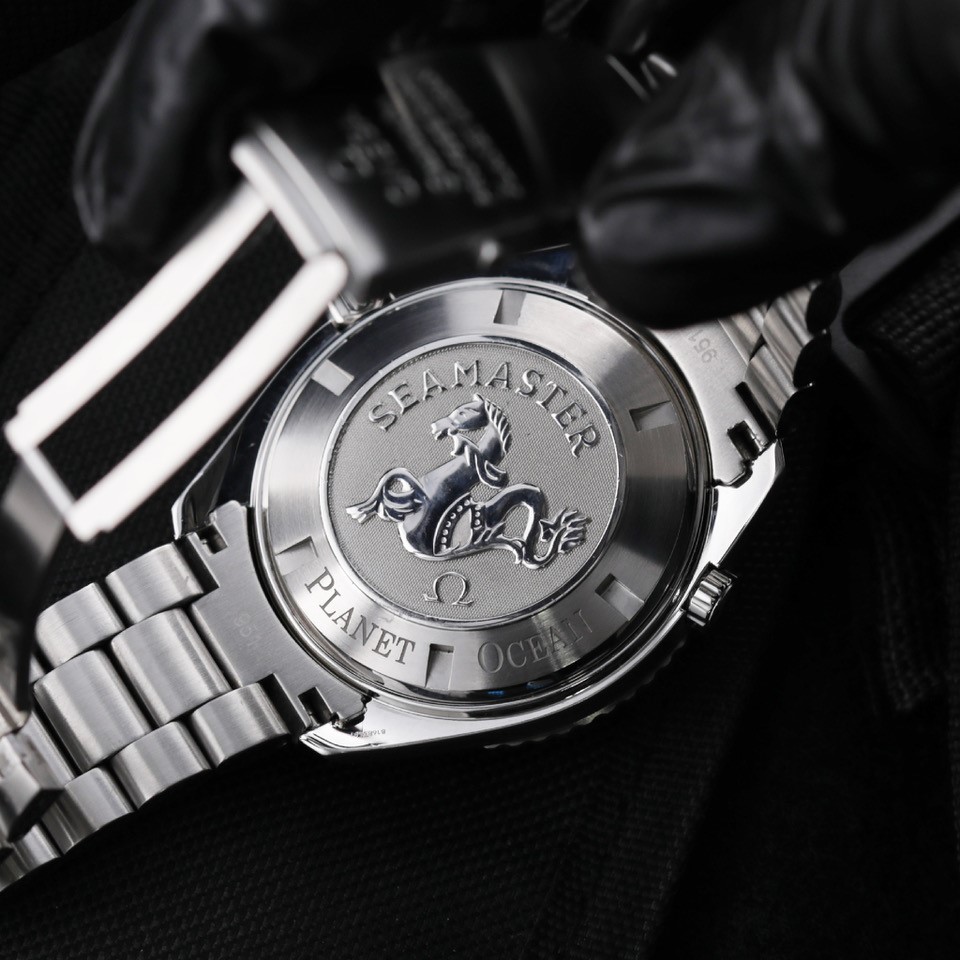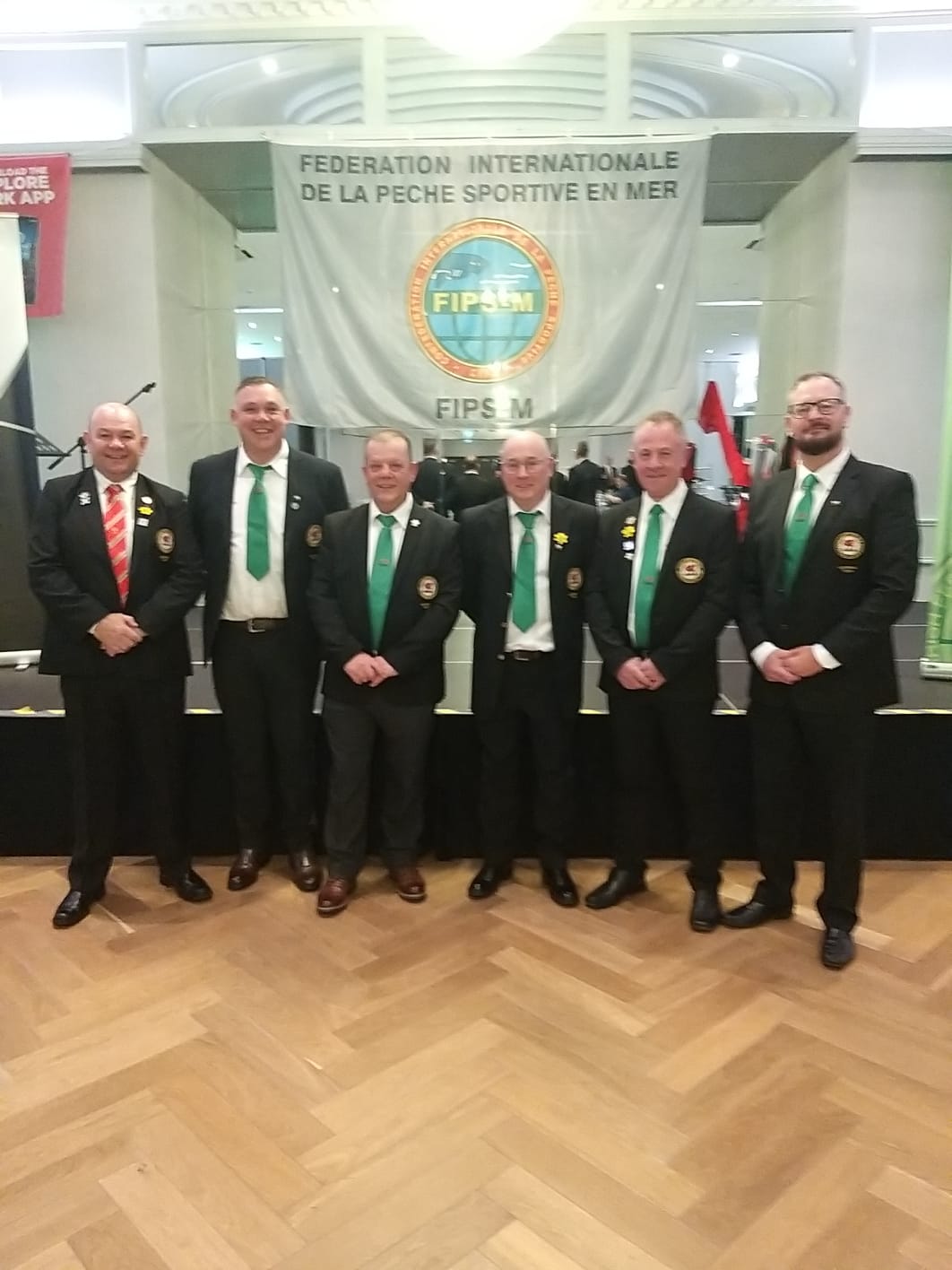Chronicling The Omega Seamaster Planet Ocean’s First Generation
Chronicling the Omega Seamaster Planet Ocean’s First Generation
By Paul Hornblow – Owner Of Watches Of Wales
The Omega Seamaster is an extremely long-lived and much-loved part of Omega’s core collection of watches. It’s Omega’s oldest model range dating back to 1948 when it was revealed as Omega’s 100th anniversary present to itself. Since then, a lot has changed in the Seamaster range, but the Seamaster is still going strong with several designs having come and gone.


In 2005, Omega launched the first generation of the Planet Ocean. The watch was beefier and more conventionally styled than Omega’s range-topping model up to that point, which had been the Seamaster 300 we affectionately remember for its wavy dial. You may also know it as the Bond Seamaster as Pierce Brosnan first wore it in 1995’s Goldeneye. It remained a movie star in its own right up until its last screen performance on Daniel Craig’s wrist in 2006’s Casino Royale.
In the early 2000s, Omega wanted to build on the Seamaster 300 by adding something that could put a Rolex Submariner to shame, a tall order by any means. And yet, when the Planet Ocean arrived in 2005 we all wondered where it had been all this time, it was like seeing your best pal after years without them, things just seemed to click. Indeed, that was undoubtedly intentional on Omega’s part. Making a watch to challenge what most think of as the diving watch to end all diving watches, the Submariner, means you have to hit a home run on your first try.
Luckily, Omega properly nailed it with the first generation Planet Ocean. It had a classic Omega design with their not-quite-round-not-quite-tonneau-shaped sports case, twisted lugs and set of broad-arrow hands which are a hallmark of the brand. You can tell this watch was made in the mid-noughties can’t you? It’s not too serious in its design, and despite the wide bezel with improved grips looking all business, it’s actually a fun and approachable watch. If the black version didn’t convince you, Omega made one with an orange bezel, orange numerals and an orange strap. The three-piece bracelet was also a highlight of the watch, it strayed away from the typical design Omega had at the time and was also extremely well made, perhaps better than the bracelets they make currently.
Even though Omega’s new Seamaster Planet Ocean was out to be a big softie at heart, it still had a no holds barred movement in the form of the calibre 2500 inside it. The same movement as in the Seamaster 300, the 2500 was based on an ETA 2892-A2 ebauche, meaning it was reliable and easily serviced by most watchmakers. Well, that was until Omega squeezed its Co-Axial escapement (designed initially by watchmaking pioneer Dr George Daniels) into it. The calibre 2500 wasn’t intended to take the Co-Axial escapement initially, so Omega had to rework each one that came into the factory so it would have space. Subsequent generations of the Planet Ocean would feature the calibre 8500 which was designed from the ground up around the Co-Axial escapement, but that’s a story for another day.
 Dr George Daniels designed Co-Axial escapement to remove sliding friction from a standard lever escapement. The lever escapement, which has been in use for centuries in one form or another, encounters friction when the jewels on the pallet fork touch the escape wheel. In 1976, Daniels finished his design which would theoretically do away with the sliding friction and therefore the need for lubrication. His design splits the pallet fork’s impulse and locking actions by utilising a third wheel on which the balance wheel oscillates. In a Co-Axial escapement, the third wheel advances a specially-designed pallet fork forwards by an impulse pin. Because the of the pallet fork’s special design, when the impulse pin moves the fork forwards, the arm that stops the escapement from going further (and thus letting the watch spin out of control) is already in place. On a regular lever escapement, the timing is a little later, meaning the jewel on the pallet fork ends up sliding along the tooth of the escapement wheel a little as it releases. The Co-Axial escapement design theoretically removes the need for lubrication, but Omega still adds a small amount to protect the escapement over time.
Dr George Daniels designed Co-Axial escapement to remove sliding friction from a standard lever escapement. The lever escapement, which has been in use for centuries in one form or another, encounters friction when the jewels on the pallet fork touch the escape wheel. In 1976, Daniels finished his design which would theoretically do away with the sliding friction and therefore the need for lubrication. His design splits the pallet fork’s impulse and locking actions by utilising a third wheel on which the balance wheel oscillates. In a Co-Axial escapement, the third wheel advances a specially-designed pallet fork forwards by an impulse pin. Because the of the pallet fork’s special design, when the impulse pin moves the fork forwards, the arm that stops the escapement from going further (and thus letting the watch spin out of control) is already in place. On a regular lever escapement, the timing is a little later, meaning the jewel on the pallet fork ends up sliding along the tooth of the escapement wheel a little as it releases. The Co-Axial escapement design theoretically removes the need for lubrication, but Omega still adds a small amount to protect the escapement over time.
To be a little pedantic about it, the movement inside the first generation Seamaster Planet Ocean was the calibre 2500C, the third iteration of Omega’s Co-Axially regulated ETA-based movement. Daniels himself had noted that although the Co-Axial escapement provided potential benefits to accuracy and durability, a higher beat rate increased pressure on the critical touchpoints on the escapement assembly, shortening lifespan and exacerbating friction. Therefore, the third generation had a lower beat rate of 25,200 beats per hour, compared to the 28,800 of the previous 2500 versions, effectively doubling the service interval compared to the same ETA movement with a Swiss lever escapement.
That’s the technical bit over with, let’s get back to the design. The very first Planet Ocean didn’t allow you to see the goings-on of the calibre 2500 thanks to solid steel caseback with Omega’s Hippocampus (seahorse) motif which has been finely engraved. Later generations of the Seamaster Planet Ocean (featuring the calibre 8500) would have a sapphire crystal display back allowing you to see the workhorse movement below. The Planet Ocean also got better seals for its case, doubling the water-resistance of the Seamaster 300, that meant the Planet Ocean could safely dive to 600m. Thanks to the helium escape valve (which is water-resistant to 50m if left unscrewed), it could be safely used by saturation divers who spend extended amounts of time under the waves.
You can tell the Planet Ocean’s first-generation apart from its younger siblings in a few subtle ways. The first of which is on the bezel, the aluminium bezel insert has a thick silver line around it. In contrast, on the newer models, the bezel is all ceramic and has a thinner silver line embedded within. The dial markers’ shape is slightly different too, and the broad arrow hands on newer models are wider especially the minutes hand. However, the most obvious difference is the caseback. Newer models beginning with the second generation had a sapphire crystal caseback allowing you to see the movement which Omega added a level of finishing to.
Let’s talk a little bit about the watch’s appearances in the James Bond movies. Like the ‘Bond’ Seamaster 300, the Planet Ocean has also had a couple of outings on the silver screen itself. The first generation had two outings with the first being on Daniel Craig’s wrist in Casino Royale. Perhaps its best feature in that particular movie is the scene on the train to Montenegro where Vesper Lynd mentions flashy watches, asks Bond if he’s wearing a Rolex and he replies with “Omega”. That one line undoubtedly helped cement Omega’s standing as the watch you really wanted.
That prompted Omega to make a special edition of the Planet Ocean for the movie. It’s the most restrained of the Seamasters Omega’s made for the Bond franchise (except for the Seamaster Aqua Terra, of course), featuring an orange 007 counterbalance for the seconds hand as the only visual indicator of the watch’s status on the dial side. Around the back, the Hippocampus was replaced with the words ‘Casino Royale’ and the 007 logo as a tribute to the movie.
We’d see the first generation of the Seamaster Planet Ocean on the wrist of Bond one more time in the follow-up film to Casino Royale entitled Quantum of Solace. It made sense that we’d see the Planet Ocean once more on the wrist of Daniel Craig, as Quantum of Solace was set to pick up immediately where Casino Royale finished. The Planet Ocean wasn’t as visible in most scenes as in the last movie, although there are a few good shots of it on Craig’s wrist.
The limited-edition Planet Ocean for Quantum of Solace didn’t hold back in its design like the last Bond edition. You got a guilloché dial with diamond-shaped clous-de-Paris (hobnail) and the Quantum of Solace logo etched onto the sapphire crystal. The back simply had the 007 logo which we think made it even cooler. The second-generation Planet Ocean would star in Skyfall but not in Spectre, meaning the first generation Planet Ocean got two on-screen shows and the second only got one.
The Omega Seamaster Planet Ocean’s first generation is a real highlight of Omega’s history. It may not be in production in that form any more, and watch fans will undoubtedly lament that fact.
Visit www.watchesofwales.co.uk to view the full range of watches.












